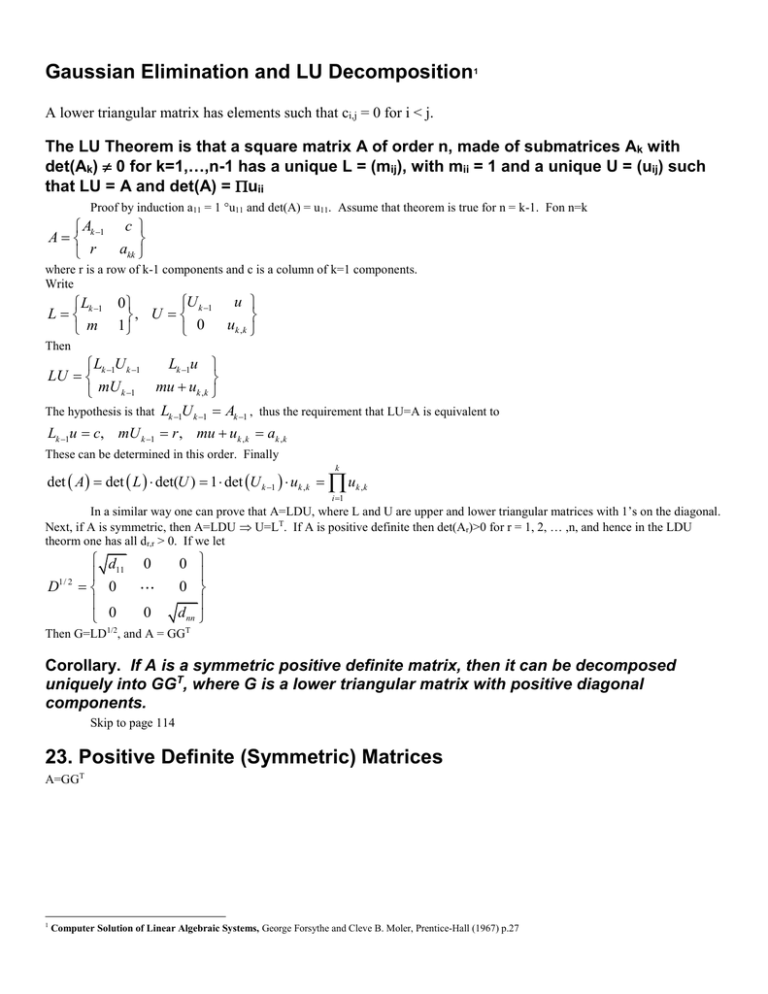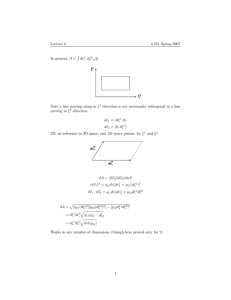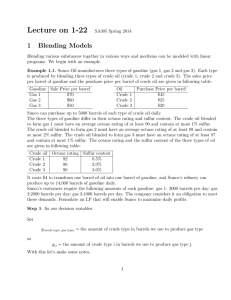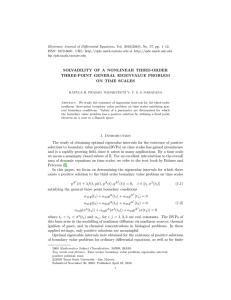Gaussian Elimination and LU Decomposition
advertisement

Gaussian Elimination and LU Decomposition1 A lower triangular matrix has elements such that ci,j = 0 for i < j. The LU Theorem is that a square matrix A of order n, made of submatrices Ak with det(Ak) 0 for k=1,…,n-1 has a unique L = (mij), with mii = 1 and a unique U = (uij) such that LU = A and det(A) = uii Proof by induction a11 = 1 u11 and det(A) = u11. Assume that theorem is true for n = k-1. Fon n=k A A k 1 r c akk where r is a row of k-1 components and c is a column of k=1 components. Write 0 U k 1 u L L k 1 , U m 1 0 uk ,k Then Lk 1U k 1 LU mU k 1 Lk 1u mu uk ,k The hypothesis is that Lk 1u c, mU k 1 Lk 1U k 1 Ak 1 , thus the requirement that LU=A is equivalent to r , mu uk ,k ak ,k These can be determined in this order. Finally k det A det L det(U ) 1 det U k 1 uk ,k uk ,k i 1 In a similar way one can prove that A=LDU, where L and U are upper and lower triangular matrices with 1’s on the diagonal. Next, if A is symmetric, then A=LDU U=LT. If A is positive definite then det(Ar)>0 for r = 1, 2, … ,n, and hence in the LDU theorm one has all dr,r > 0. If we let D1/ 2 d11 0 0 0 0 0 0 d nn 1/2 Then G=LD , and A = GGT Corollary. If A is a symmetric positive definite matrix, then it can be decomposed uniquely into GGT, where G is a lower triangular matrix with positive diagonal components. Skip to page 114 23. Positive Definite (Symmetric) Matrices A=GGT 1 Computer Solution of Linear Algebraic Systems, George Forsythe and Cleve B. Moler, Prentice-Hall (1967) p.27 a11 a21 a 31 a12 a22 a23 g112 g 21 g11 g g 31 11 a13 g11 a23 g 21 a33 g31 0 g 22 g 32 g11 g12 g12 g 21 g 22 2 0 g11 0 0 g 33 0 g12 g 22 0 g13 g 23 g 33 2 g31 g13 g 32 g 23 g 33 g11 g13 g 21 g13 g 22 g 23 g31 g12 g32 g 22 If a is on the diagonal a j , j g 2j ,1 g 2j ,2 g 2j , j Note that this puts a bound on the maximum size of gjj. gjj < ajj. If a is below the diagonal ai , j gi ,1 g j ,1 gi ,2 g j ,2 gi , j g j , j The procedure is to A. 1. g11 a11 2. a21 g 2,1 g1,1 g 21 a21 / g11 3. a31 g31 g11 g31 a31 / g11 B. 1. 2 a22 g12 g21 g22 g22 a22 g12 g 21 The algorithm is For j := 1 step 1 until n do j 1 Begin gjj := sqrt(ajj- g k 1 2 j ,k ); note that this implies that there will be an advantage to starting with the largest a ii in the 1 position. Reorder the array.htm .doc– slowed robmin convergenge down. For i := j+1 step 1 until n do gi , j j 1 gi ,k g j ,k k 1 : ai , j g j, j ; end Notice that the elements of A above the diagonal are not involved because of the symmetry.










